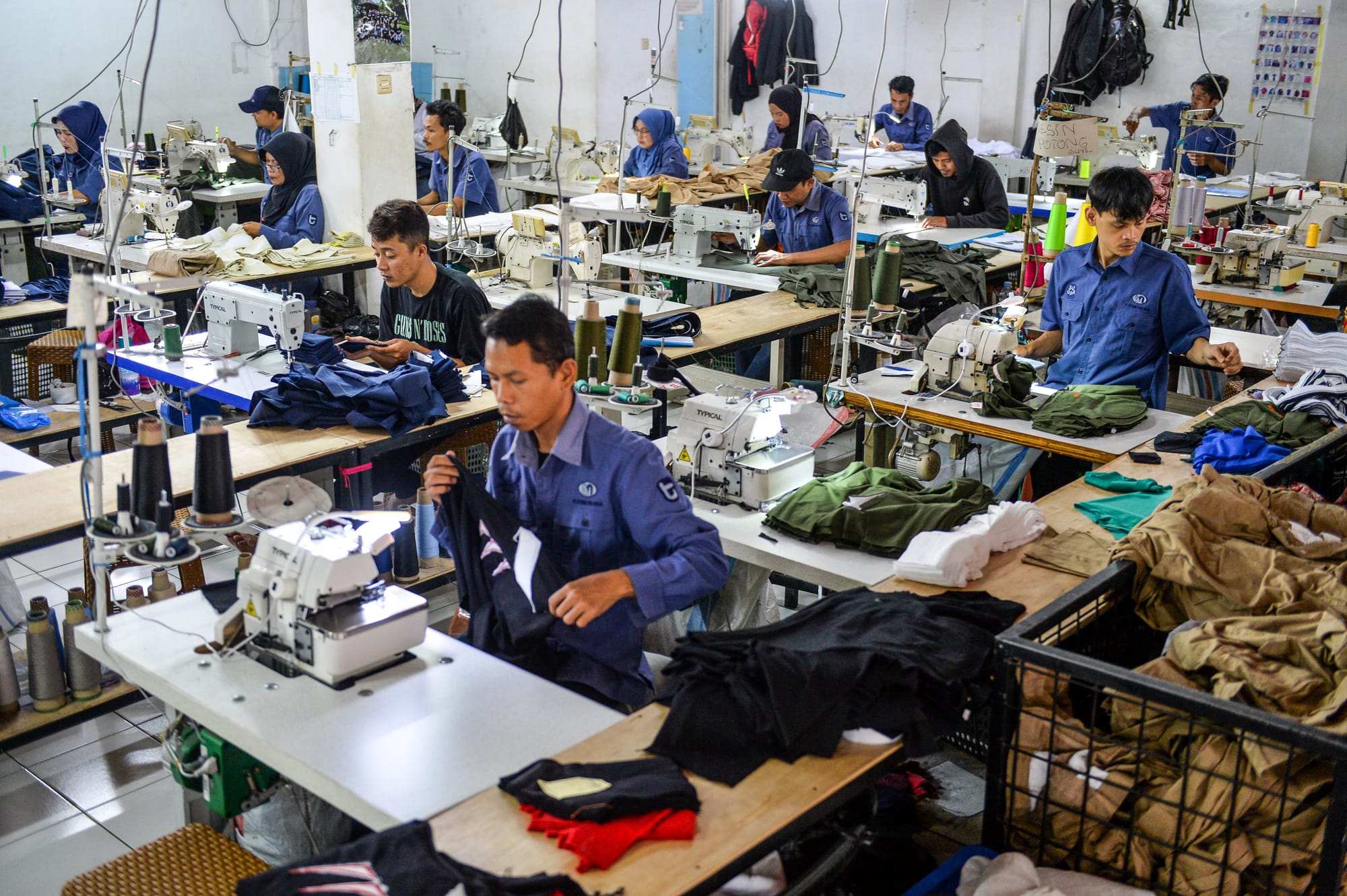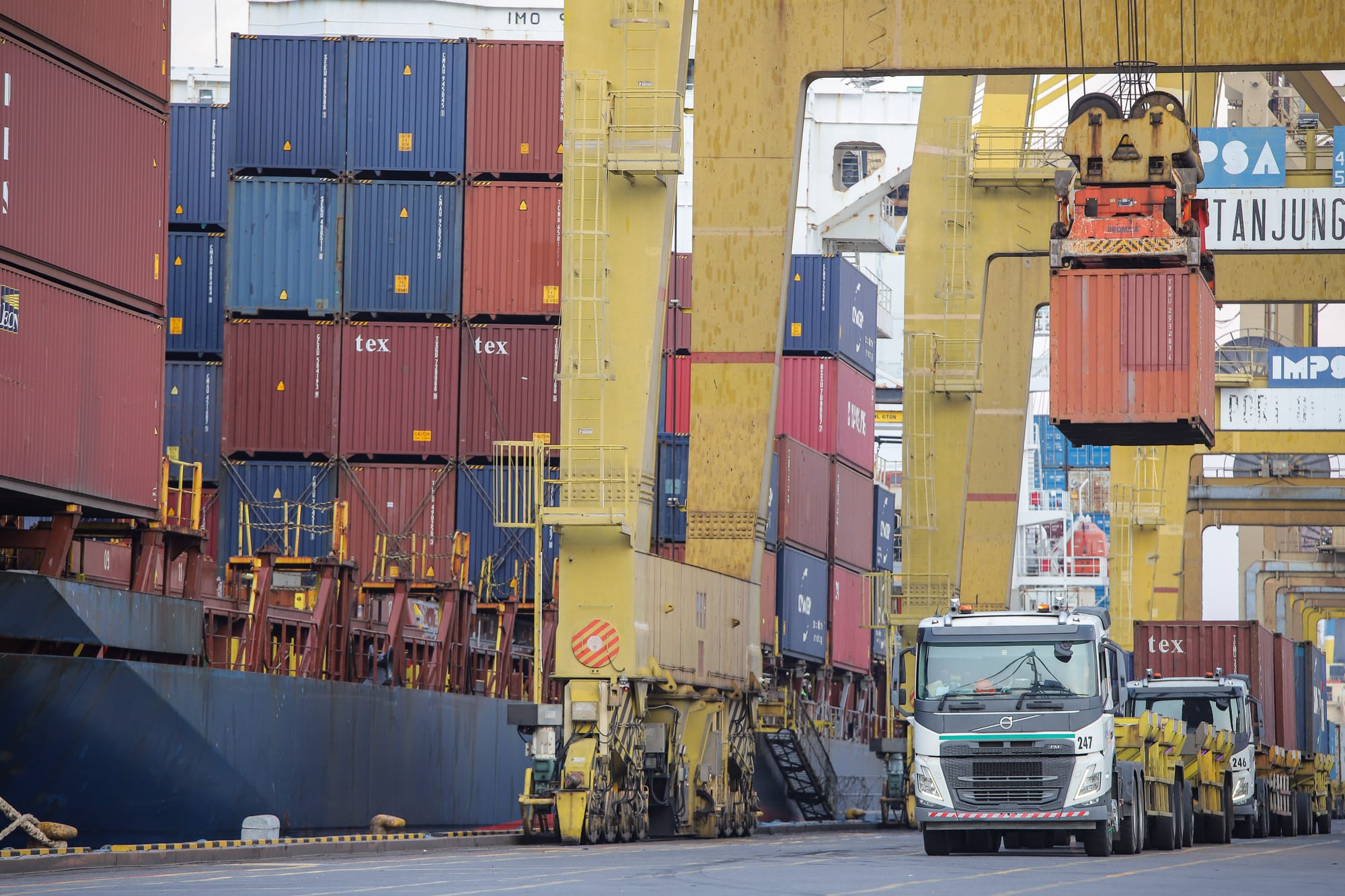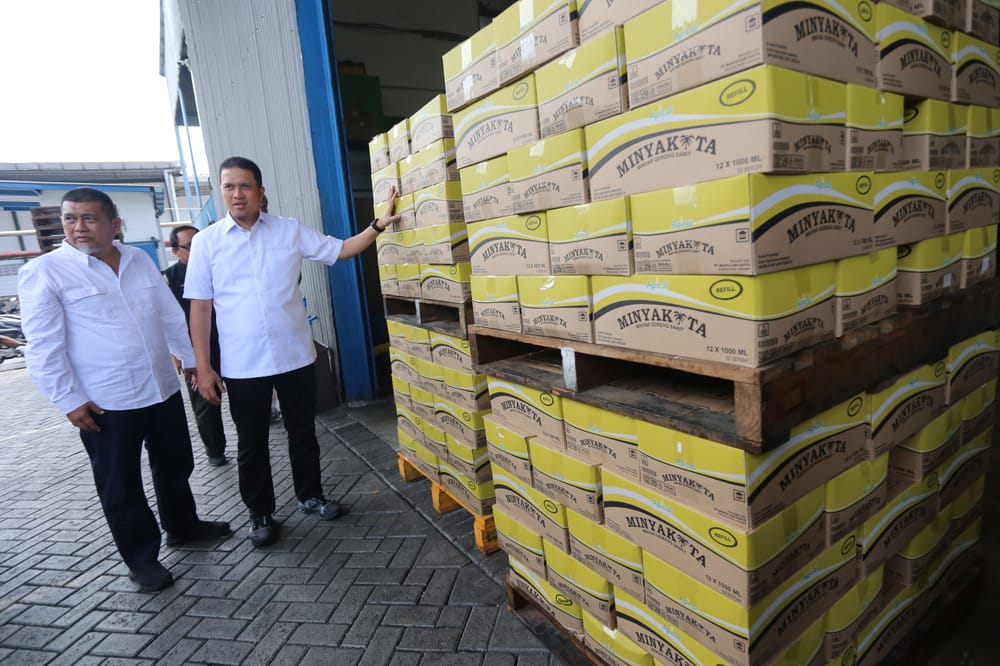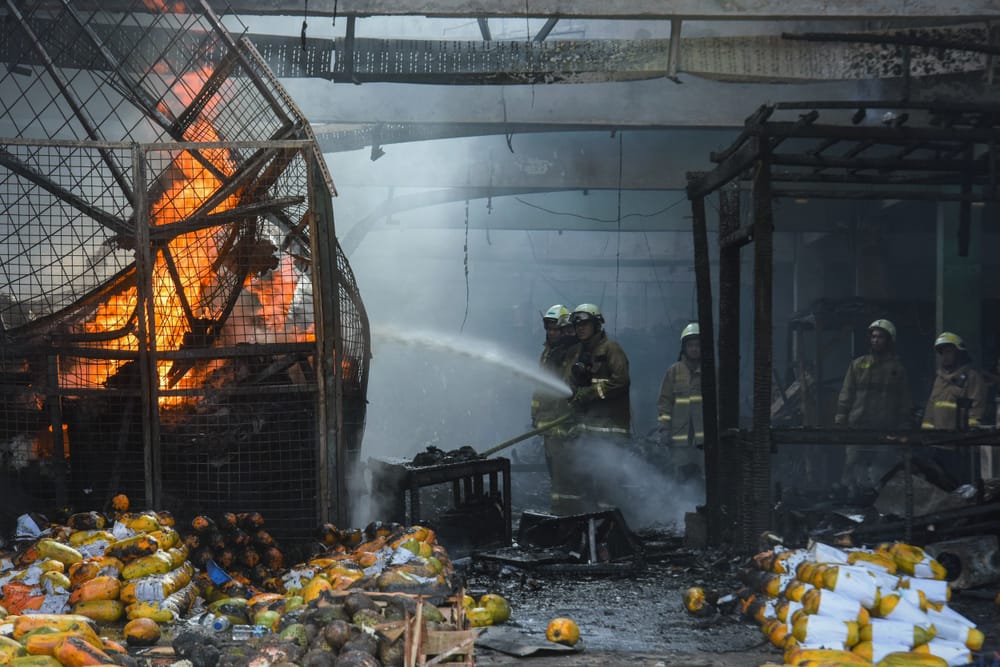The Central Statistics Agency (BPS) reported that Indonesia's trade balance in September 2025 recorded a surplus of USD 4.34 billion. This achievement marks the continuation of a positive trend for 65 consecutive months since May 2020.
Deputy for Distribution and Services Statistics at BPS, Pudji Ismartini, conveyed that cumulatively, the trade surplus throughout January to September 2025 reached USD 33.48 billion, an increase of USD 11.30 billion compared to the same period the previous year.
“The surplus throughout January to September 2025 was supported by non-oil and gas commodities of USD 47.20 billion, while oil and gas commodities still experienced a deficit of USD 13.71 billion,” said Pudji during a press conference at her office, Jakarta, Monday (3/10/2025).
Indonesia's export value in September 2025 was recorded at USD 24.68 billion, an increase of 11.41% compared to September 2024. Meanwhile, imports reached USD 20.34 billion, up 7.17% annually. Higher export performance than imports keeps the trade balance in surplus, although the surplus amount decreased compared to August 2025.
Cumulatively, Indonesia's exports in January to September 2025 increased by 8.14% compared to the same period last year. The highest increase occurred in the processing industry sector with a value of USD 167.85 billion or grew 17.02%. This sector is the main contributor to national exports along with the increasing added value of natural resource-based manufactured products.
The three largest export destination countries for Indonesia are China, the United States, and India, with contributions reaching 41.81% of total non-oil and gas exports. The export value to China of USD 46.47 billion is dominated by iron and steel, mineral fuels, and nickel products. Exports to the United States reached USD 23.03 billion, which includes electrical machinery and equipment, knitted clothing, and footwear. Meanwhile, exports to India were recorded at USD 14.02 billion.
From the import side, the total value for January to September 2025 reached USD 176.32 billion, up 2.62% compared to the same period the previous year. The increase mainly occurred in capital goods with a value of USD 35.90 billion, or growing 19.13%.
The largest country of origin for non-oil and gas imports is China with a value of USD 62.07 billion, followed by Japan at USD 11.01 billion, and the United States at USD 7.33 billion. The non-oil and gas trade surplus is still supported by major commodities such as animal or vegetable fats and oils worth USD 25.14 billion, mineral fuels USD 20.15 billion, iron and steel USD 14.11 billion, nickel products USD 6.50 billion, as well as precious metals and jewelry USD 5.41 billion.
Competition between countries
The Chairman of the Indonesian Export Companies Association (GPEI), Benny Soetrisno, believes that the trade balance surplus trend, which has lasted for 65 consecutive months, is good news for the national economy.
However, Benny reminded that the decrease in the surplus value in September 2025 needs to be taken seriously. According to him, this shrinkage could be caused by a decrease in trade volume due to tariff policies in a number of export destination countries and increasing pressure on commodity prices.
Benny explained that competition between countries in the Southeast Asian region is getting tougher, especially between Indonesia and Vietnam, which have similar manufacturing industry structures.
“We are competing with Vietnam in America and Europe because they have better efficiency and market access,” he said.
Sectors such as shoes, ready-made clothing, textiles, furniture and handicrafts, he said, are becoming direct competition arenas in the increasingly open global market.
For natural resource-based commodities, Benny believes Indonesia still has an advantage compared to Vietnam.
“If it's agriculture, it's different, we have palm oil, Vietnam doesn't,” he said.
Products such as palm oil, spices, and mining materials remain mainstays of exports to partner countries such as China and India, where China absorbs a lot of iron, steel, and nickel, while India is an important market for Indonesian spices.
In addition to external factors, Benny believes that export financing is still a major challenge for businesses. He highlighted the Indonesia Export Financing Agency (LPEI), which was formed to support export financing, but according to him, it is not flexible enough because it still follows general banking principles.
According to Benny, the institution should be more agile and able to adapt to the needs of exporters. Benny also encouraged national banks to play an active role in export financing, for example by lowering loan interest rates and expanding access to credit for businesses.
Furthermore, Benny encouraged the government to tighten supervision of non-urgent imports and expand export markets to non-traditional regions such as the Middle East, South America and Africa. Imports should only be carried out for goods that cannot yet be produced domestically.
"If we already have the goods, the quality is good, the price is competitive, we shouldn't need to import. That's the same as killing our own industry," said Benny.
As predicted
Previously, the Head of the Macroeconomic and Financial Market Research Department of Permata Bank, Faisal Rachman, through the Permata Institute for Economic Research (PIER) report, noted that Indonesia's trade balance surplus in September 2025 decreased to USD 4.34 billion from USD 5.49 billion in August. Faisal assessed that the decline occurred along with an increase in imports after several months of slowing down. Cumulatively, PIER noted that the surplus value from January to September 2025 was USD 33.48 billion, in line with data released by BPS.
PIER explained that exports grew 11.41% annually in September 2025, while monthly exports fell 1.14% due to adjustments after the implementation of reciprocal tariffs. Export growth was mainly supported by rising prices of crude palm oil (CPO) and precious metals, while coal prices fell both monthly and annually.
"Improvements in the manufacturing PMI index in most major trading partners helped maintain external demand, although commodity price pressures remain a limiting factor," he said.
Read also:

PIER also noted that imports increased 7.17% annually and 4.42% monthly, which indicates increasing domestic demand in line with government policies oriented towards growth. Going forward, PIER estimates that the rate of imports has the potential to be faster than exports, so that it can put pressure on Indonesia's net export performance. PIER also projects that the current account deficit for 2025 will widen moderately to around 0.81% of GDP, with foreign exchange reserves in the range of USD 150 to 156 billion, and the rupiah exchange rate in the range of IDR 16,200 to 16,400 per USD until the end of the year.







